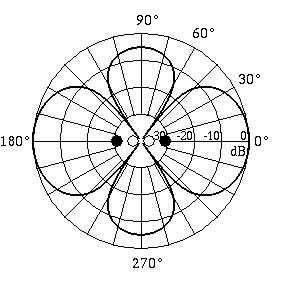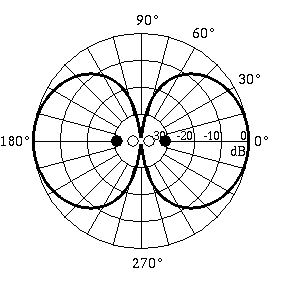Radiation from a monopole source
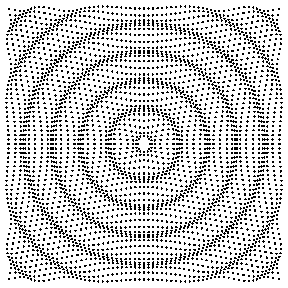 |
A monopole is a source which radiates sound equally well in all directions. The simplest example of a monopole source would be a sphere whose radius alternately expands and contracts sinusoidally. The monopole source creates a sound wave by alternately introducing and removing fluid into the surrounding area. Aboxed loudspeakerat low frequencies acts as a monopole. The directivity pattern for a monopole source is shown in the figure at right. The animated GIF at left shows the pressure field produced by a monopole source. Individual points on the grid simply move back and forth about some equilibrium position while the spherical wave expands outwards. |
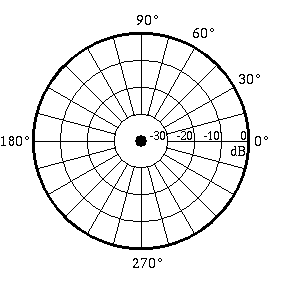 |
Radiation from a dipole source
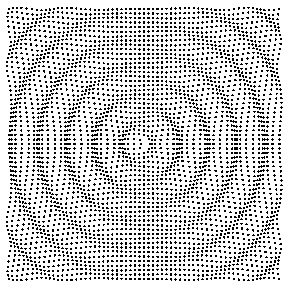 |
A dipole source consists of two monopole sources of equal strength but opposite phase and separated by a small distance compared with the wavelength of sound. While one source expands the other source contracts. The result is that the fluid (air) near the two sources sloshes back and forth to produce the sound. A sphere which oscillates back and forth acts like a dipole source, as does an unboxedloudspeaker(while the front is pushing outwards the back is sucking in). A dipole source does not radiate sound in all directions equally. The directivity pattern shown at right looks like a figure-8; there are two regions where sound is radiated very well, and two regions where sound cancels. The animated GIF at left shows the pressure field produced by a dipole source. At the center of the pressure field you can see sloshing back and forth caused by the dipole motion. The regions where sound is cancelled shows up along the vertical axes (the grid motion is almost zero). Furthermore, the wavefronts expanding to the right and left are 180oout of phase with each other. |
 |
Radiation from a lateral quadrupole source
 |
If two opposite phase monopoles make up a dipole, then two opposite dipoles make up a quadrupole source. In aLateral Quadrupolearrangement the two dipoles do not lie along the same line (four monopoles with alternating phase at the corners of a square). The directivity pattern for a lateral quadrupole looks like a clover-leaf pattern; sound is radiated well in front of each monopole source, but sound is canceled at points equidistant from adjacent opposite monopoles.
The animated GIF at left shows the pressure field produced by a lateral quadrupole source. At the center of the pressure field you can see the quadrupole motion as the particles alternate motion in the horizontal and vertical directions. back and forth caused by the dipole motion. The regions where sound is cancelled shows up along the diagonals (where the grid motion is almost zero). Furthermore, there is a 180ophase difference between the horizontal and vertical wavefronts. |
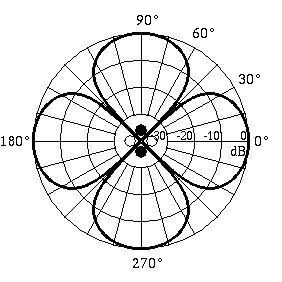 |
Radiation from a linear quadrupole source
 |
If two opposite phase dipoles lie along the same line they make up aLinear Quadrupolesource. Atuning forkis a good example of a linear quadrupole source (each tine acts as a dipole as it vibrates back and forth, and the two tines oscillate in opposite directions). What makes the linear quadrupole interesting is that there is a very obvious transition fromnear fieldtofar field. In the near field there are four maxima and four minima, with the maxima along the quadrupole axis about 5dB louder than the maxima perpendicular to the quadrupole axis. The near field directivity pattern is shown at right. In the far field there are only two maxima (along the quadrupole axis) and two minima (perpendicular to the quadrupole axis) as shown in the figure below right. The animated GIF movie at left shows the pressure field radiated by a linear quadrupole. At the center of the picture you can see the quadrupole near field pattern. As the wave expands outwards it becomes almost a spherical wave (notice that the left and right going wavefronts are in phase as opposed to the dipole source) except that the amplitude is severely reduced in the vertical directions. |
|



